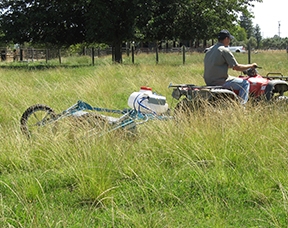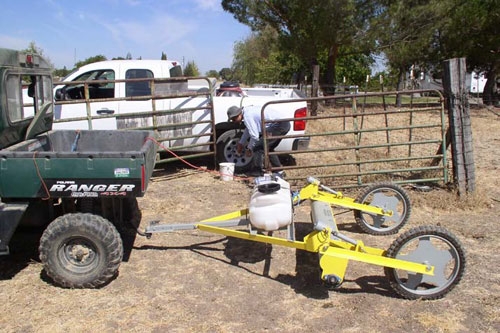
Sprays and granular applications of herbicides place the chemical near the ground, but the rotary wiper applies an herbicide to weeds that are taller than the desired plants. The equipment allows the operator to set the height of the rotating wiper and brush herbicide onto stems and the underside of leaves, where the herbicide is more readily absorbed.
Last year, UC Cooperative Extension advisors experimented with the rotary wiper to control smutgrass on pastures. As the name implies, livestock do not like smutgrass. Since they avoid it, smutgrass quickly dominates irrigated pastures causing significant reductions in livestock grazing capacity. According to the RCD, an invasion of smutgrass is occurring in Sacramento Valley irrigated pastures.
"(The rotary wiper) is a very economical tool, especially considering the cost of spraying a whole pasture and having to re-establish it," the RCD press release quoted UC Cooperative Extension natural resources advisor Josh Davy. "It's great to have another tool that helps to control smutgrass, which is a weed that can devastate pasture production."
The research found that the desirable plants must be shorter than the smutgrass for the rotary wiper to work effectively. Davy recommends the field be grazed heavily before wiping so that weeds are taller than desirable grasses and clover.
The RCD press release was picked up by the Tehama County Daily News.
Attached Images:
